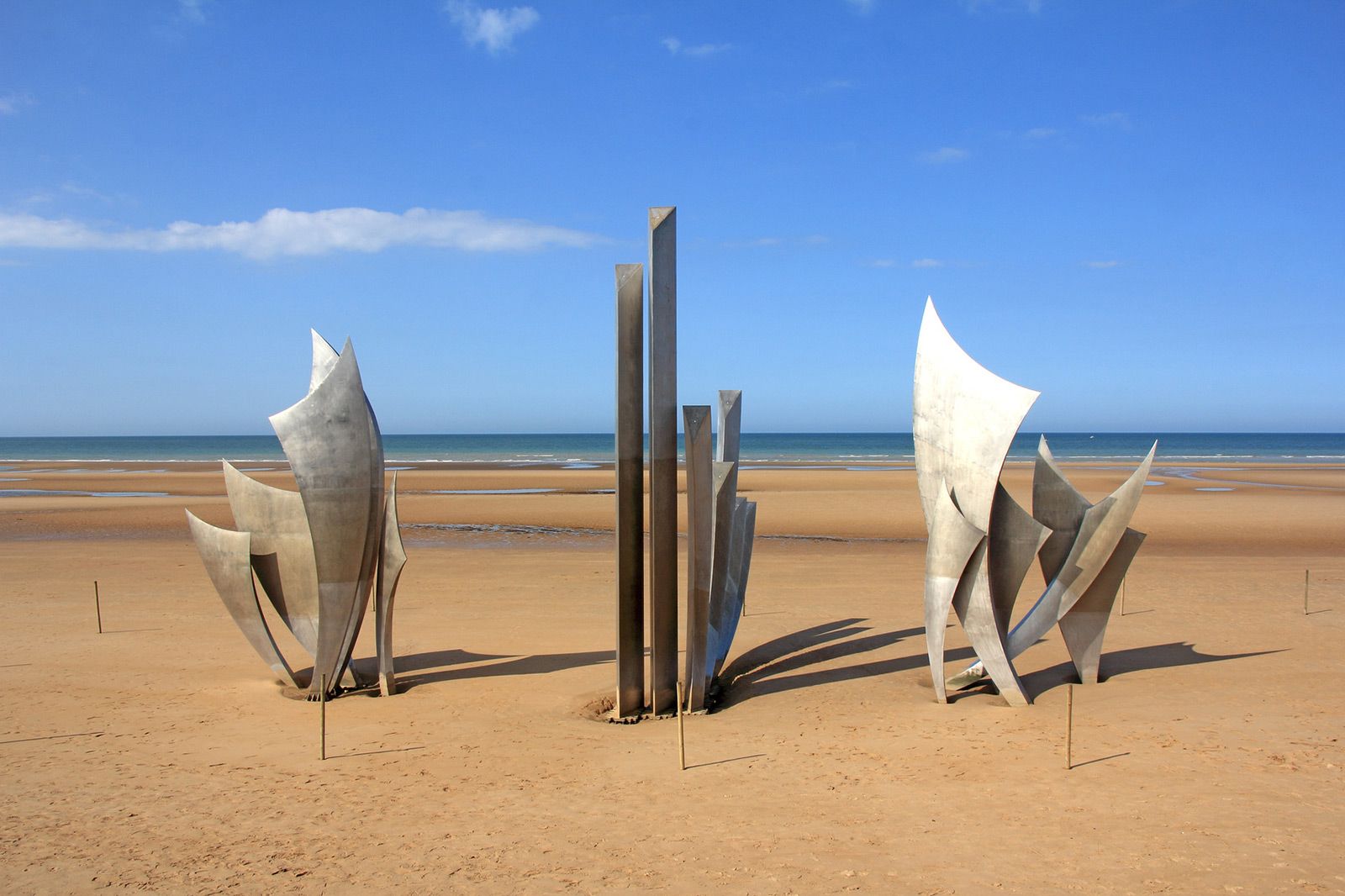Updated on 30 April 2021
Reading time: 5 minutes
Most towns and villages would have to wait weeks, even months for their Liberation. For Cherbourg 26 June, for Caen 9 July, for Saint-Lô 18 July, and for Paris itself, 25 August.
From London, in the afternoon of 6 June General de Gaulle broadcast: ‘The Supreme Battle is under way. Of course, this is the Battle of France and the Battle for France. For the sons of France, wherever they are, and whoever they are, the simple and sacred duty is to fight the enemy by all the means at their disposal.’
DE GAULLE’S ENTRY INTO BAYEUX
At midday, Eisenhower broadcast the message: ‘In company with our brave Allies and brothers-in-arms on other Fronts you will bring about the destruction of the German war machine, the elimination of Nazi tyranny over the oppressed peoples of Europe, and security for ourselves in a free world.’
BRITISH TROOPS INVEST BAYEUX UNOPPOSED IN THE MORNING OF 7 JUNE
The British troops off Gold Beach entered the town without a fight at around 9am on 7 June. At the same time the German gun battery at Longues-sur-Mer was captured and the gun crew there quietly surrendered. You can see here Maurice Schumann, the spokesman for the Free French (who had broadcast regularly on the BBC as well), and who had come ashore at Asnelles-sur-Mer. On 14 June, General de Gaulle disembarked from the destroyer La Combattante, to step ashore at Juno Beach. After visiting Montgomery, de Gaulle was driven off to Bayeux where he attracted enthusiastic crowds.
The original plan for a 25-mile wide assault area was set aside by General Montgomery on 1 January 1944; it had a new name, Overlord, and would now take place along a 50-mile long stretch of the Normandy coastline, from Ouistreham, north of Caen to Saint-Martin-de-Varreville in the Manche département. General Eisenhower and all commanders agreed. The objective was now clear: to capture Cherbourg from inland as soon as possible – and get it up and running!
The port of CHERBOURG, A KEY STRATEGIC OBJECTIVE
Cherbourg owed its importance to having the capacity of receiving the largest ships afloat, and directly from the United States. General Bradley commanded First Army; his first mission, to capture Cherbourg.
It’s a pleasure to be able to say to the French people, ‘HERE IS THE FIRST LARGE TOWN THAT IS RETURNED TO YOU’
On 21 June, the town was surrounded; on 25 June, the Americans were penetrating the town itself; and on 26 June, the Fort du Roule was finally taken. General Bradley, addressing the people of the town, declared: ‘It’s a pleasure to be able to say to the French people, “Here is the first large town that is returned to you.”‘ While the town was intact, the port facilities were thoroughly wrecked by the Germans. Unsung heroes laboured in their tens of thousands to rebuild the port. The first DUKW or floating truck, risked the harbour roads on 16 July; the first Liberty Ship direct from the United States, on 8 October.
THE LIBERATION OF CAEN
The intense bombing of towns and cities in Normandy began in the night of 5-6 June. For Caen, it began at 1:30pm on D-Day. The fire thereby unleashed burnt for 12 days and much of the centre of town was gutted. The purpose of bombing city centres was to disrupt enemy communications and slow the advance of German reserves by road and by rail towards the front line. Nince towns were targeted, including Caen, Lisieux, Falaise, Coutances, Saint-Lô and Vire.
FIVE WEEKS OF SLAUGHTER: ‘THE KILLING MATCH’
It had been hoped to take Caen within 24 hours of landing, but this proved optimistic. The RAF were desperate to use the Carpiquet aerodrome west of the city. The civilian population of Caen would pay a terrible price for being so important a strategic objective. Those who could fled, others took shelter in the quarries.
CAEN BECAME A MAJOR STRATEGIC STICKING POINT. THE POPULATION WOULD PAY THE PRICE
Only in the morning of 9 July were British troops from the east and north, and the Canadians from the west able to make their way gingerly into what was left of the ruined city. It was 19 July when the last shots were fired, as the Germans were finally levered out of the suburb of Vaucelles, south of the river.
SAINT-LÔ TO AVRANCHES
The liberation of Saint-Lô was at the heart of the American sector. While the First Army approached it on 16 June, Cherbourg was given the priority and forces diverted. The bombardments of 6-7 June were particularly intense and violent, and by the time it was liberated on 18 July, nothing was left of Saint-Lô. It earnt the unhappy sobriquet ‘the capital of ruins.’ The battle of the hedgerows that began on the night of D-Day for the paratroopers spread to every GI fated to engage in a battle that at times resembled the jungle warfare of the Pacific. The Cotentin is a dense patchwork of fields enclosed by deep ditches and prickly impenetrable hedges. The breakout began on 25 July with Operation Cobra. The Third Army was able to burst into Brittany and sweep aside the German opposition.
THE BATTLE OF THE HEDGEROWS IN THE COTENTIN: A FORM OF JUNGLE WARFARE
In the evening of 30 July American troops liberated Avranches; on 1 August, Le Clerc’s French 2nd Armoured Division disembarked onto Utah Beach to join General Patton. The 3rd Army could tear into the rest of France, heading south. The Germans launched a counterattack at Mortain bent on slicing through American lines. However, in the absence of the Luftwaffe it was doomed to failure.




